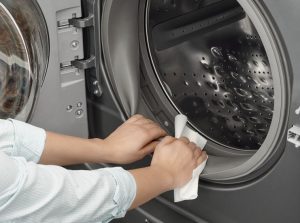Draining Issues
Earrings, bracelets, necklaces, and articles of clothing, are common items that get lodged in the pump or the hose to the pump. The first thing you need to do is remove the hose that goes from the tub to the pump. Drain the water and use something (a coat hanger works) to yank out clogged objects, shake the pump to check for broken blades and grasp the pump shaft while rotating it. Be sure it rotates without hiccups.
Grinding
If you hear a grinding noise, you could have a broken coupler. This is something that happens if you make a habit of overloading the machine. The good news is that it’s an easy fix and purchasing a coupler is a cinch. To replace the coupler, pull the pump off the motor shaft and disconnect the electrical connectors from the motor. From there, prop the motor up while you pop the bottom retainer. Take the broken coupler parts off of the transmission and motor. Push the new coupler into place by tapping it with something sturdy like a wooden block.
Won’t Spin
The machine fills with water and then just stays there. This is probably a broken lid switch. Here’s the first tip: Don’t drop a washing machine’s lid. Be gentle with it. When it slams down, the lid switch is damaged every time.
If you want to test the switch you’ll want to buy a continuity tester, which will run you around $8, or a multimeter which costs around $15 dollars. Remove the wire to the switch and place the tester’s probes inside the switch’s connectors. The readings should switch between no continuity and continuity, as you open and close the lid. If they don’t switch back and forth, a new switch costs $30-$35.
Fills Slowly or Won’t Fill at All
Clean the inlet screens on the water valve or replace the entire water valve assembly, which would only cost $35- $40.Replacing the water valve is much easier than it sounds. Disconnect the water valve bracket and place the new valve on it. Transfer the electric connectors to the Hot/Cold parts of the new valve. Then transfer the hose by squeezing the spring clamp.
Now that we have covered the nitty-gritty of washing machine repair, it’s important to check and see if the washing machine is actually plugged in. You’d be surprised how many unplugged cords are the causes of a “malfunctioning” washer.
While the fixes above will cover most washing machine repairs, there are a few issues that require a professional eye. If you think your washing machine problems are more than you can bear, definitely contact a professional appliance repair service.
